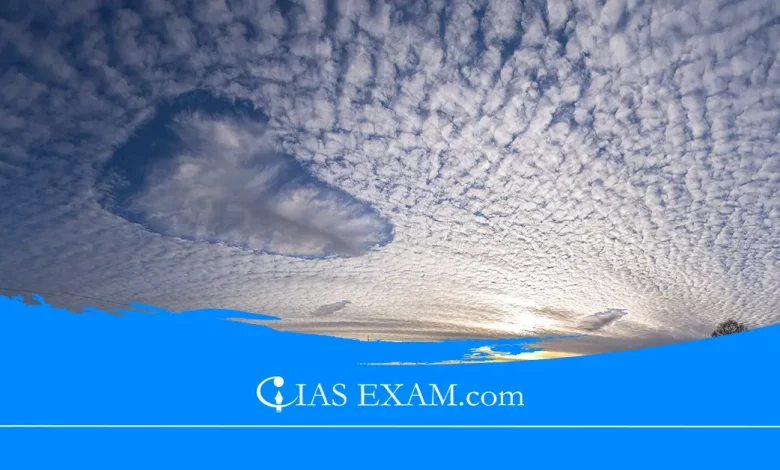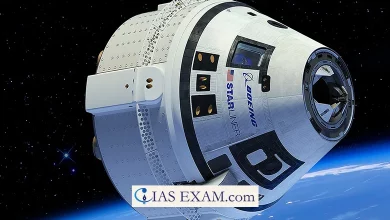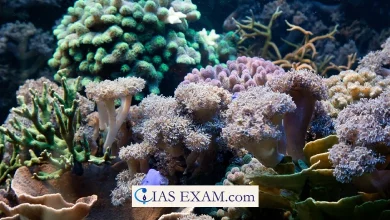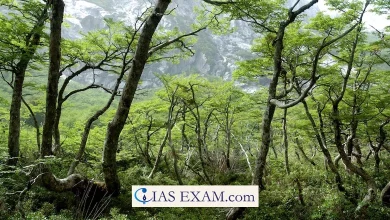
Context
Recently, NASA’s Terra satellite captured a cluster of cavum clouds over the Gulf of Mexico off Florida’s west coast.
About
- These clouds look like a large circle or ellipse has been smartly cut from the clouds, leaving feathery wisps in the center of the hole.
- They are also known as hollow-punch clouds or fallstreak holes.
- These are a testament to the difficult and dynamic processes that occur in our atmosphere.
Formation
- Cavum clouds are formed whilst aeroplanes fly through banks of altocumulus clouds, mid-level clouds that contain supercooled water droplets.
- As air moves around the plane, a process known as adiabatic growth can make the droplets freeze into ice crystals.
- The ice crystals finally grow heavy and fall out of the sky, leaving a hollow within the cloud layer.
- The falling ice crystals are seen in the centre of the holes as wispy trails of precipitation that never reach the ground – functions referred to as virga.
Clouds
- They are seen accumulations of tiny water droplets or ice crystals within the Earth’s ecosystem. They vary significantly in shape, feature, and coloration.
Types
- Cirrus Clouds: These are wispy, curly, or stringy clouds found excessive within the environment, commonly better than 6,000 metres (20,000 feet).
- They are typically manufactured from ice crystals and commonly signal clear, fair weather.
- Stratus Clouds: These are horizontal and stratified, or layered. They can blanket the entire sky in a single pattern and typically occur close to the Earth.
- They regularly shape on the boundary of a warm front, where warm, moist air is forced up over bloodless air.
- Cumulus Clouds: These are massive and lumpy clouds. They can stretch vertically into the atmosphere as much as 12,000 metres (39,000 feet) high.
- They are created by means of robust updrafts of heat, wet air.
- Nimbostratus Clouds: These are low and center darkish gray clouds with precipitation falling from them.
- Stratocumulus Clouds: These are low clouds with irregular loads of clouds, rolling or puffy in look, sometimes with area between the clouds.
- Cumulonimbus Clouds: These are huge clouds with dark bases and tall billowing towers.
- They can have sharp well-defined edges or an anvil shape at the top. Precipitation can obscure the base of the clouds.
Source: The Indian Express
UPSC Prelims Practice Question
Q.Consider the following statements:
- High clouds primarily reflect solar radiation and cool the surface of the Earth.
- Low clouds have a high absorption of infrared radiation emanating from the Earth’s surface and thus cause warming effect.
Which of the statements given above is/are correct?
a. 1 only b. 2 only
c. Both 1 and 2 c. Neither 1 nor 2
Ans – “d”





.png)



